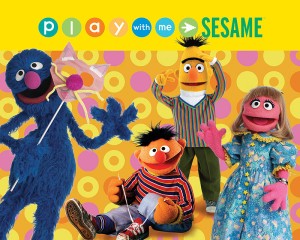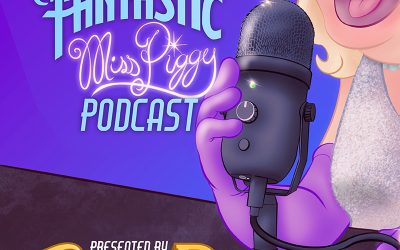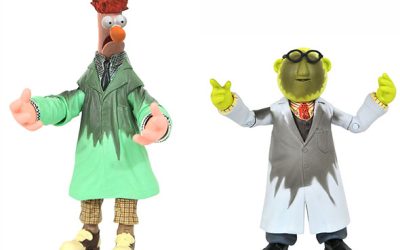 Spin-off Sesame
Spin-off Sesame
Wednesday, April 17
Okay, play friends. So far, we’ve conclusively answered the question of whether Play With Me Sesame is fun to watch or not. (The short answer: Yes.) So now we can turn to the deeper, more difficult questions.
Today’s topic — Spin-offs: Boon to Mankind or Destroyer of Entertainment?
I’m qualified to speak authoritatively on this subject, because I was one of those people fortunate enough to grow up during the 1970’s. I know spin-offs like a fish knows water. Back in my day, we wouldn’t bother watching a show unless it had two or three spin-offs. So I’m an old hand with spin-offs. I’ve seen ’em come and I’ve seen ’em go. I was there when Mork from Ork was on Happy Days. I watched MASH begat AfterMASH, and What’s Happening become What’s Happening Now. I know Rhoda, and Phyllis, and Tabitha, and Flo. Norman Lear took All in the Family and spun Maude and The Jeffersons. Then the maid from Maude got Good Times, and the maid from The Jeffersons got her own show, called Checking In. As Americans, we were inching ever closer to the dream of one show for every living human being.
Now, conceptually, spin-offs are not the creatively bankrupt cash-cow scam that one might think. No no. Sure, there were plenty of spin-offs that were just selling an old idea past its expiration date — Archie Bunker’s Place, let’s say, or The Brady Brides — but every once in a while they’d create a show that could actually make you forget that it was a spin-off in the first place. Like Benson, let’s say. Okay, maybe that’s not a great example.
For the sake of argument, let’s imagine that there’s a scale of spin-off success that I’m going to call the Laverne-Chachi Scale. On one side of the scale, there are the shows that become complete, independent little universes, where the appeal of the show is based on the characters and situations themselves, rather than your memories of liking the original show it came from. Let’s call that side of the scale Laverne and Shirley. (I didn’t say this was a perfect system.) On the other side of the scale are the faded-out, weak copies of shows, which never managed to create anything memorable on their own, and were generally just complete embarrassments. The endpoint on that side, obviously, is Joanie Loves Chachi.
So the question is: As a spin-off, is Play With Me Sesame more of a Laverne, or more of a Chachi?
The crucial element, I think, to the good spin-offs — your Lavernes, your Jeffersons, your Facts of Life — is that they took peripheral, outsider characters from their original shows, and then fleshed out the settings where those characters lived. Say what you like about Laverne and Shirley, they managed to take a couple of throwaway characters from Happy Days and created a worldfor them — an apartment, a bottling plant, a pizza parlor. They weren’t just sitting around getting postcards from Richie Cunningham. They had their own thing going. Ditto for Mrs. Garrett, the housekeeper from Diff’rent Strokes. They didn’t just give her Gary Coleman’s little brother and send her on her way. They created a girls’ boarding school for her.
Now, I’m not suggesting we give everybody a girls’ boarding school. That would be silly. I’m just saying that when spin-offs work, and become real grown-up independent shows, it’s because they create a complete new setting for the characters, another space to inhabit.
And this question of space is actually a strike against Play With Me Sesame. I think that a major source of Sesame Street’s appeal is its construction of an imaginary space where kids can go to play and feel safe. Every kid imagines playing on Sesame Street — sitting on the steps at 123 Sesame Street, going across the street to Hooper’s Store, knocking on Oscar’s trash can. In fact, while you were reading that last sentence, you were picturing yourself there, weren’t you? You know exactly where you’d go if you wanted to visit the Fix-It Shop, or Big Bird’s nest, or Ernie and Bert’s apartment.
Here’s another example. Imagine yourself sitting in Statler and Waldorf’s theater box. Now, if I asked you how to get to the guest star’s dressing room, you’d know exactly how to direct me there, right? The Muppet Theater never actually existed — that theater box was just another piece of the set, that spatial relationship that you know so well was just an illusion. But even knowing that, intellectually… it’s still real, isn’t it? Even when you look at behind-the-scenes photos, there’s still some part of your heart that just knows that the Muppet Theater is a real place.
In fact, every successful Muppet TV show has a geography. From Fraggle Rock to Nanny’s Nursery to the Big Blue House, part of building a successful fantasy world is building the world. Creating characters is only half the job. Those characters need a place to live and play.
So with all that in mind, where exactly does Play With Me Sesame take place? There’s no set, except for some backgrounds with circles or kids’ drawings on them. It’s all shot against a green screen, with a computer adding in a pattern in the background. So where is this place where Ernie, Bert, Grover and Prairie Dawn are playing? Inside the television? On a computer screen? There’s no geography, no spatial relationships. You’re either on screen or you’re off screen.
It’s a horrible thing to say about anybody, but I’d have to say that Play With Me Sesame is more of a Chachi, really. It’s fun to watch, and it’s got a lot of energy… but it doesn’t really create a new world. If it took place in a big house, or a day care center, or something like that, then it would be possible to create a separate identity for itself as a show. But without a setting of its own, it feels more like an afterthought.
When the college students of 2020 get drunk and start reminiscing about the TV shows they watched as kids, they’ll remember Sesame Street. They’ll remember Elmo’s World and the Big Blue House. But they probably won’t remember Play With Me Sesame. It’s entertaining while you’re watching it — but after it’s over, you can’t imagine yourself living in that space. You can’t really play there. It just disappears. It’s like a dream.
by Danny Horn

 Spin-off Sesame
Spin-off Sesame

